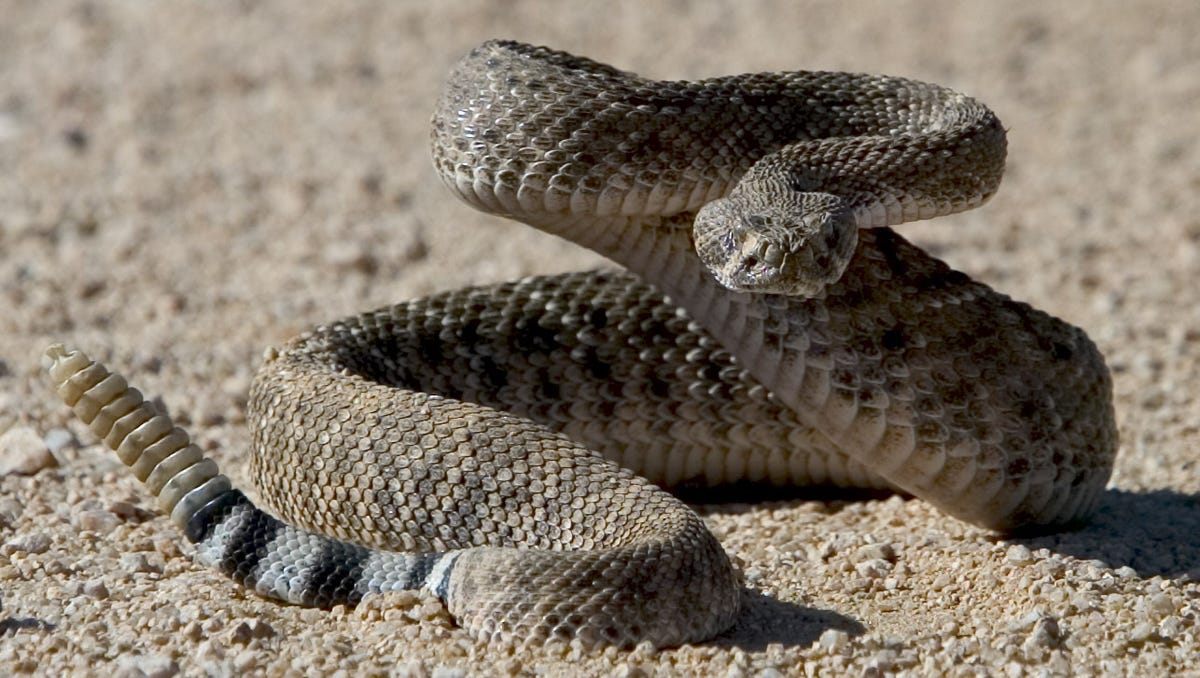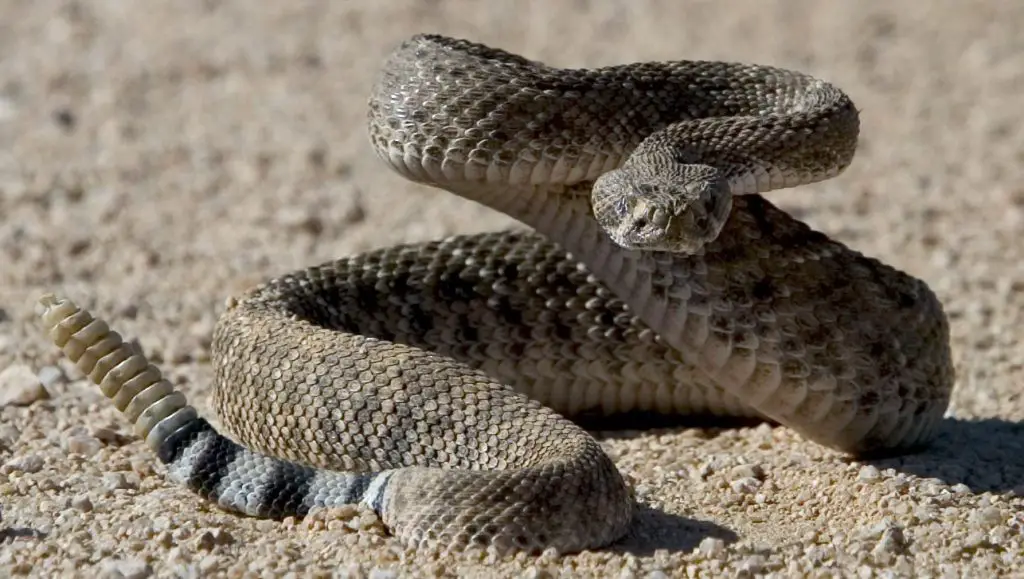Arizona is known for its beautiful landscapes, stunning sunsets, and unique wildlife. One of the most fascinating creatures found in this state is the rattlesnake. But where can you find them?
From the Sonoran Desert to the Grand Canyon, rattlesnakes can be found in various habitats throughout Arizona. Whether you’re an avid hiker or simply curious about these venomous snakes, this guide will help you discover the best places to spot them in the wild. So grab your boots and let’s go on a rattlesnake hunt!
Rattlesnakes can be found all over Arizona, but they are most commonly found in the desert regions of the state. Some popular areas for rattlesnake sightings include the Sonoran Desert, Superstition Mountains, and Tonto National Forest. It’s important to exercise caution when hiking in these areas and to stay alert for any signs of rattlesnakes.

Where to Find Rattlesnakes in Arizona?
If you are an adventurous soul and love to explore the wild side of Arizona, then rattlesnake spotting should definitely be on your bucket list. Arizona is home to a variety of rattlesnakes, and their unique habitat makes them easier to spot. In this article, we will guide you through the best places to find rattlesnakes in Arizona.
Saguaro National Park
Saguaro National Park, located in Tucson, offers a perfect habitat for rattlesnakes with its vast desert landscape. You can easily spot the Western Diamondback Rattlesnake here, which is the most common species in Arizona. These snakes are usually found basking in the sun on rocks or hiding in crevices. However, be careful while exploring the park as rattlesnakes are known to be aggressive when provoked.
To avoid any mishaps, it is recommended to stay on the designated trails and keep a safe distance from any wildlife you spot. It is also advisable to wear protective gear like long pants and boots while hiking.
South Mountain Park
South Mountain Park, located in Phoenix, is another great location to spot rattlesnakes in their natural habitat. The park has over 16,000 acres of desert landscape, making it a perfect home for different species of rattlesnakes. The most commonly spotted species here is the Western Diamondback Rattlesnake, but you can also spot the Mojave Rattlesnake and the Black-tailed Rattlesnake.
While exploring the park, it is important to keep an eye out for any signs of rattlesnakes like their distinctive rattle or their camouflaged skin. It is also advisable to carry a snakebite kit and know how to use it in case of an emergency.
Grand Canyon National Park
The Grand Canyon National Park is not only a popular tourist destination, but it is also home to a variety of wildlife, including rattlesnakes. The most commonly spotted species in the park is the Western Diamondback Rattlesnake. These snakes are usually found in rocky areas or hiding in crevices.
While exploring the park, it is important to keep a safe distance from any wildlife you spot, including rattlesnakes. It is also advisable to stay on designated trails and wear protective gear like long pants and boots.
Organ Pipe Cactus National Monument
The Organ Pipe Cactus National Monument, located near the Mexican border, is a unique desert landscape that offers a perfect habitat for rattlesnakes. The most commonly spotted species here is the Western Diamondback Rattlesnake, but you can also spot the Mojave Rattlesnake and the Sidewinder Rattlesnake.
While exploring the monument, it is important to stay on designated trails and keep an eye out for any signs of rattlesnakes. It is also advisable to carry a snakebite kit and know how to use it in case of an emergency.
Black Rock Canyon Campground
Black Rock Canyon Campground, located in Joshua Tree National Park, is a great location to spot rattlesnakes in their natural habitat. The most commonly spotted species here is the Western Diamondback Rattlesnake.
While exploring the campground, it is important to keep a safe distance from any wildlife you spot, including rattlesnakes. It is also advisable to stay on designated trails and wear protective gear like long pants and boots.
Lost Dutchman State Park
Lost Dutchman State Park, located in Apache Junction, is a popular location for hiking and camping, and it is also home to a variety of rattlesnakes. The most commonly spotted species here is the Western Diamondback Rattlesnake.
While exploring the park, it is important to keep an eye out for any signs of rattlesnakes and stay on designated trails. It is also advisable to wear protective gear like long pants and boots.
Tonto National Forest
Tonto National Forest, located in Payson, offers a perfect habitat for rattlesnakes with its vast desert landscape. The most commonly spotted species here is the Western Diamondback Rattlesnake.
While exploring the forest, it is important to keep a safe distance from any wildlife you spot, including rattlesnakes. It is also advisable to stay on designated trails and wear protective gear like long pants and boots.
Papago Park
Papago Park, located in Phoenix, is a popular location for hiking and exploring the desert landscape, and it is also home to rattlesnakes. The most commonly spotted species here is the Western Diamondback Rattlesnake.
While exploring the park, it is important to keep an eye out for any signs of rattlesnakes and stay on designated trails. It is also advisable to wear protective gear like long pants and boots.
Usery Mountain Regional Park
Usery Mountain Regional Park, located in Mesa, is a great location to spot rattlesnakes in their natural habitat. The most commonly spotted species here is the Western Diamondback Rattlesnake.
While exploring the park, it is important to keep an eye out for any signs of rattlesnakes and stay on designated trails. It is also advisable to wear protective gear like long pants and boots.
Superstition Wilderness Area
Superstition Wilderness Area, located in Apache Junction, is a popular location for hiking and exploring the desert landscape, and it is also home to a variety of rattlesnakes. The most commonly spotted species here is the Western Diamondback Rattlesnake.
While exploring the area, it is important to keep an eye out for any signs of rattlesnakes and stay on designated trails. It is also advisable to wear protective gear like long pants and boots.
In conclusion, Arizona offers a unique habitat for different species of rattlesnakes, and exploring the wild side of the state can be a thrilling experience. However, it is important to stay safe and cautious while exploring the desert landscape and keep a safe distance from any wildlife you spot. By following these safety guidelines and exploring the designated trails, you can have a safe and enjoyable experience spotting rattlesnakes in Arizona.
Frequently Asked Questions
What kind of rattlesnakes can be found in Arizona?
Arizona is home to 13 different species of rattlesnakes, including the Western Diamondback, Sidewinder, and Mojave Rattlesnake. Each species has its own unique appearance, behavior, and habitat preferences.
Rattlesnakes are found throughout the state, from desert valleys and rocky canyons to mountain forests and grasslands. They are most active during the spring and fall, when temperatures are mild and they are seeking food and mates.
What are some popular places to find rattlesnakes in Arizona?
Rattlesnakes can be found in a variety of habitats across Arizona, but some popular locations include the Sonoran Desert, Superstition Mountains, and Grand Canyon National Park. Hiking trails, rocky outcroppings, and areas near water sources are often good places to spot rattlesnakes.
It is important to remember that rattlesnakes are wild animals and should be treated with caution and respect. Always keep a safe distance and avoid disturbing them in their natural habitat.
When is the best time of day to find rattlesnakes in Arizona?
Rattlesnakes are most active during the early morning and late afternoon, when temperatures are cooler. They may also be active at night during the summer months. However, rattlesnakes can be found at any time of day, so it is important to always be aware of your surroundings when exploring the outdoors in Arizona.
If you do encounter a rattlesnake, give it plenty of space and do not attempt to handle or approach it. Rattlesnakes are venomous and can be dangerous if provoked.
What should I do if I encounter a rattlesnake in Arizona?
If you encounter a rattlesnake in Arizona, the first thing to do is to give it plenty of space. Do not attempt to handle or approach the snake, and do not try to kill it. Remember that rattlesnakes are an important part of the ecosystem and play a valuable role in controlling rodent populations.
If you are hiking or exploring in an area known to have rattlesnakes, wear sturdy boots and stay on established trails. Carry a cell phone and let someone know where you are going and when you plan to return. In the event of a snakebite, seek medical attention immediately.
How can I learn more about rattlesnakes in Arizona?
If you are interested in learning more about rattlesnakes in Arizona, there are many resources available. Local nature centers, parks, and museums often offer educational programs and guided hikes that focus on the ecology and behavior of rattlesnakes.
There are also many books, websites, and online communities dedicated to the study and appreciation of rattlesnakes and other reptiles. Remember to always approach these animals with respect and caution, and to appreciate them from a safe distance.
Arizona Rattlesnakes – Herping Arizona – Common Rattlesnakes to Find
In conclusion, rattlesnakes are a common sight in Arizona, but it’s important to know where to find them. If you’re looking for a chance to observe these fascinating creatures, consider visiting one of the many state parks or wildlife areas in the region. These locations offer a unique opportunity to see rattlesnakes in their natural habitat, while also providing education and safety information for visitors.
Remember, while rattlesnakes can be dangerous, they play an important role in the ecosystem and should be respected. Always keep a safe distance and avoid disturbing them if possible. With the right precautions and knowledge, you can enjoy the beauty and diversity of Arizona’s wildlife, including the iconic rattlesnake.
So, whether you’re a resident or a visitor to the state, take the time to learn about these incredible creatures and discover the many places where you can find them in Arizona. From desert trails to mountain foothills, there’s no shortage of opportunities to witness the majesty of these unique and fascinating snakes. So, plan your next adventure today and experience the beauty and excitement of rattlesnakes in Arizona!


